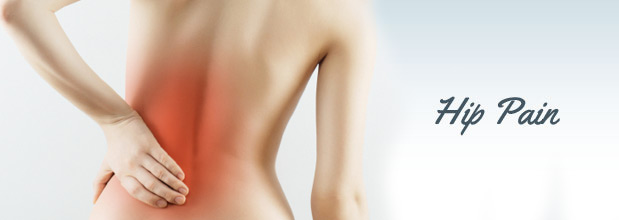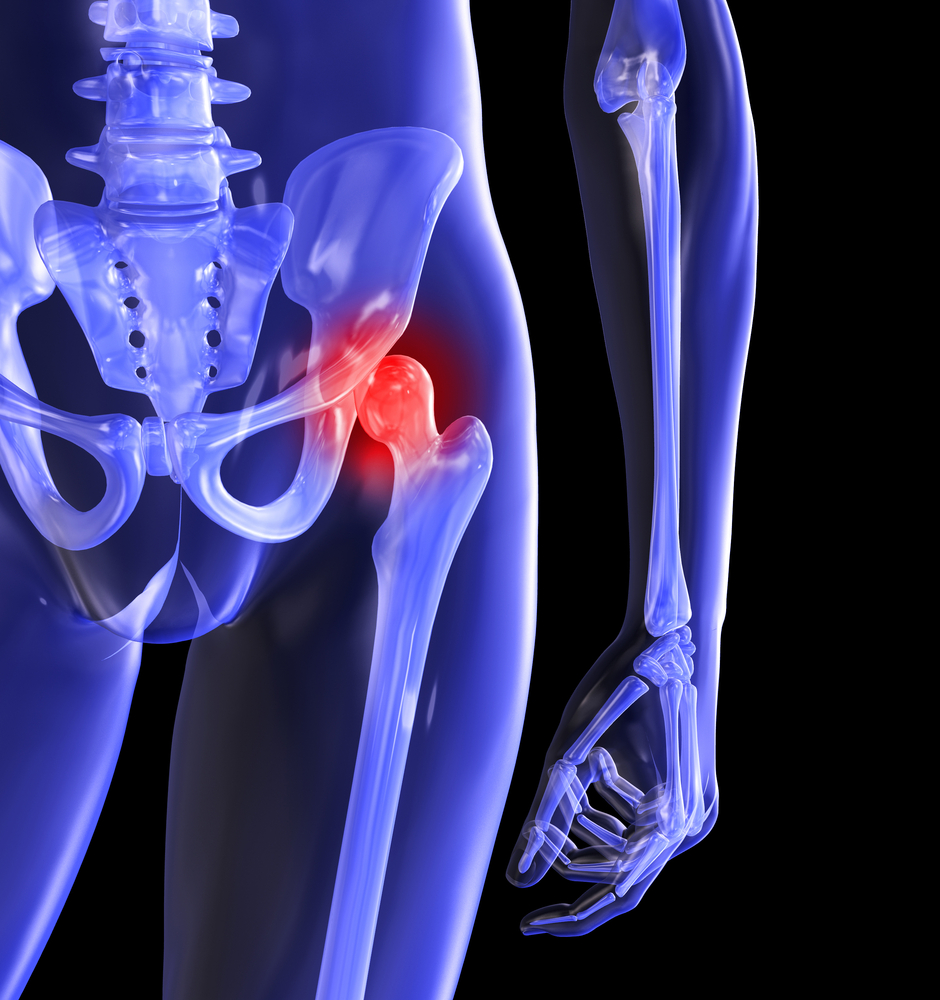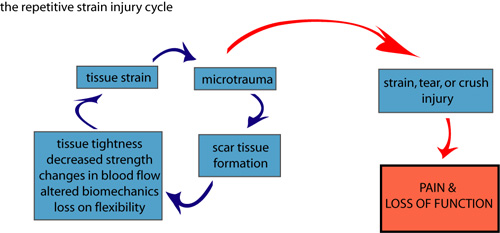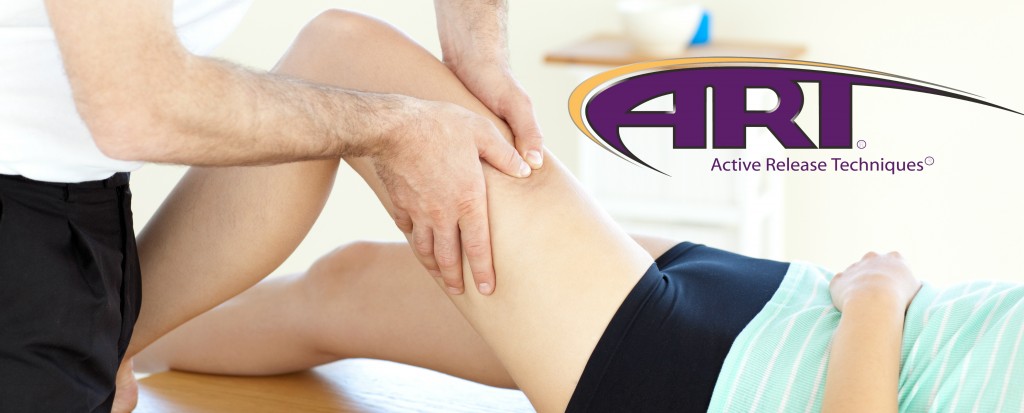Resolving Hip Pain with Active Release Techniques (ART)
Not only are hip problems extremely common, but they can be among the most frustrating conditions to affect the muscles and joints of the body. When hip pain occurs it can prevent you from walking, running, playing golf, exercising, gardening, and even sleeping. To make matters even worse many common hip conditions are slow to respond to traditional types of care, often creating further disappointment and aggravation.
Now for the good news, a new treatment technique known as Active Release Techniques® (ART®) is proving to be a very effective method to treat many common hip problems and is helping to get hip pain sufferers back doing their favourite activities. But before we talk about how ART® works so effectively you first need to understand how the hip becomes injured in the first place.
How Does Hip Pain Occur?
The hip consists of a “ball-and-socket” joint that is formed between the Femoral Head and the Acetabulum, a part of the Pelvic Bone. As a result of the shape of this joint it is capable of a wide range of motion in all directions – forward and backwards, side-to-side, and rotation inwards and outwards. In addition to this large range of motion it is important to understand that because the hip joint joins the leg to the trunk there is a tremendous amount of force that must pass through this region with daily activities such as walking, bending, crouching, and lifting.
Due to the high amount of force, combined with the large range of motion, the hip must rely on a complex system of muscles to control and protect the area. These muscles include an outer system of muscles – including the Gluteus Maximus, Hamstring, Quadricep, and Adductor group – as well as a deeper group of smaller muscles that provide an important stabilizing function. This deep group includes the Piriformis, Gluteus Medius, and Obturator group.
Medius, and Obturator group. The muscle groups around the hip are essentially organized into opposing pairs. This means that the muscles on the front on the hip are paired with muscles on the back of hip and together these muscles control motion in the forward-tobackward direction. Likewise the muscles on the outer side of the hip are paired with the muscles on the inner side and this pair of muscles controls side-to-side movements. Other muscle pairs act to control inward and outward hip rotation as well. These “pairs” of muscles basically surround the hip so that together the can move and control the hip in all directions. When all the muscles are all working properly the chance of pain and injury is very small.
Through a variety of causes such as prolonged sitting, repetitive movements, excessive use, previous injury, improper exercise, various athletic activities, or lack of physical activity, one of more of the muscles of the hip region can become tight or weak. When this happens it will result in a “muscle imbalance” in the region, which will not only stress the hip joint itself, but is will place further strain on the other muscle groups as they now must work harder to compensate for the tight or weak muscle. Over time this strain can develop into what is know as micro-trauma. Simply stated, micro-trauma is very small scale damage that occurs in the muscles, tendons, joint capsules, and ligaments in response to small levels of strain. Initially this micro-trauma is not painful, but may be perceived as a mild ache or tightness in the muscles. Although only small, this damage still needs to be repaired. The body responds to micro-trauma in a predictable way by laying down small amounts of scar tissue to repair the injured tissue. Unfortunately, over time this scar tissue will build-up and accumulate into what we call adhesions. As these adhesions form they start to affect the normal health and function of the muscles. In fact, they will often lead to pain, tightness, stiffness, restricted joint motion, and diminished blood flow.
As scar tissue adhesions accumulate in the muscles, tendons, and ligaments of the hip, it places more and more strain on the muscles as they must now stretch and contract against these adhesions in an attempt to move and stabilize the area. This places even further strain on the hip muscles, which in turn leads to even more micro-trauma. This leads to what is known as a “Repetitive Strain Injury Cycle” where continued microtrauma leads to further adhesion formation, which in turn leads to more stress and further microtrauma. The health of the tissues and their ability to compensate for the initial imbalance will eventually deteriorate, and eventually this process will lead to noticeable pain and injury which will occur in one of two ways. Either the Repetitive Injury Cycle will continue and pain will progressively build until it becomes more and more noticeable; or, pain will develop suddenly after some type of seemingly straightforward activity. The latter case tends to be a “straw-that-broke-the-camels-back” phenomena where the muscles and ligaments have become so affected that a minor event can lead to injury.
The Nerves and Their Role in Hip Pain
Another type of hip pain can result from irritation to the nerves in the hip region. This occurs because as the nerves exit the spine and travel down the leg they pass around, under, over, and sometimes through the muscles in the hip region. When there is an accumulation of scar tissue adhesions in and around the hip this scar tissue can also affect the nerves. Just as the muscles need to be able to glide on each other, the nerves also need to be able to glide freely between the layers of muscles. In many cases the accumulation of scar tissue can cause the nerves to become “stuck” to the surrounding muscles and fascia. Instead of the nerves easily gliding between the muscles they become stretched and irritated and can lead to hip pain. It is quite common for a nerve entrapment at the hip to be misdiagnosed as a simple“bursitis” or “tendonitis”. Obviously an incorrect diagnosis will lead to incorrect treatment, which will not be effective in relieving the condition.
How Can These Hip Injuries Be Fixed?
The Traditional Approach…
In an attempt to relieve hip pain, a variety of treatment methods are used, either on their own, or in combination with other methods. Some of the more common approaches include antiinflammatory medications, rest, ice, ultrasound (US), muscle stimulation (E-Stim), stretching and strengthening exercises, and when all else fails, surgery. Unfortunately, most of these traditional techniques generally require a long period of time before they provide any significant relief, and in many cases provide only temporary relief from symptoms instead of fixing the underlying cause of the problem.
The main reason that these approaches are often ineffective is that they fail to address the underlying scar tissue adhesions that develop within the muscles and surrounding soft tissues. It is these adhesions that are binding the tissues together, restricting normal movements, and interfering with the normal flexibility and contraction of the muscles in and around the hip.
Passive approaches such as medications, rest, ice, and ultrasound, all focus on symptomatic relief and do nothing to address the muscle restrictions and dysfunction. More active approaches such as stretching and exercises are often needed for full rehabilitation of the condition and to restore full strength and function of the muscles, however, they themselves do not treat the underlying adhesions. In fact, without first addressing the scar tissue adhesions, stretches and exercises are often less effective and much slower to produce relief or recovery from hip pain.
Active Release Techniques® Our Approach: ART® – A Better Solution
ART® stands for Active Release Techniques. It is a new and highly successful hands-on treatment method to address problems in the soft tissues of the body, including the muscles, ligaments, fascia, and nerves. What makes ART® different from other treatments is that it is designed to identify and address scar tissue adhesions that are interfering with the normal function of the body. By locating and treating the soft-tissue adhesions with ART®, it allows the practitioner to, 1) break-up restrictive adhesions, 2) restore normal tissue translation and movement and 3) more completely restore strength, flexibility, balance, and stability to the hip and surrounding area.
You can think of an ART® treatment as a type of active massage. The practitioner will first shorten the muscle, tendon, ligament, or joint capsule, and then apply a very specific tension with their hands as you actively stretch and lengthen the tissues. As the tissue lengthens the practitioner is able to assess the texture and tension of the tissue to determine if the tissue is healthy or contains scar tissue that needs further treatment. When scar tissue adhesions are felt the amount and direction of tension can be modified to treat the problematic area. There are over 500 specific ART® treatment protocols which allow the practitioner to “feel” which structures have become problematic and require treatment. In this sense, each treatment is also an assessment of the health of the area as we are able to feel where the problem is occurring.
An additional benefit of ART® is it can allow us to further assess and correct problems not only at the hip, but also in other areas of the “kinetic chain” such as the foot, ankle, knee, pelvis, and back. This ensures that all the soft tissues that have become dysfunctional and are contributing to the specific hip injury are addressed, even if they have not all developed pain.
One of the best things about ART® is how fast it can get results. In our experience, the majority of hip problems respond very well to ART® treatments, especially when combined with home stretching and strengthening exercises. Although each case is unique and there are several factors that will determine the length of time it will require to fully resolve the condition, we usually find a significant improvement can be gained in just 5-8 treatments.





